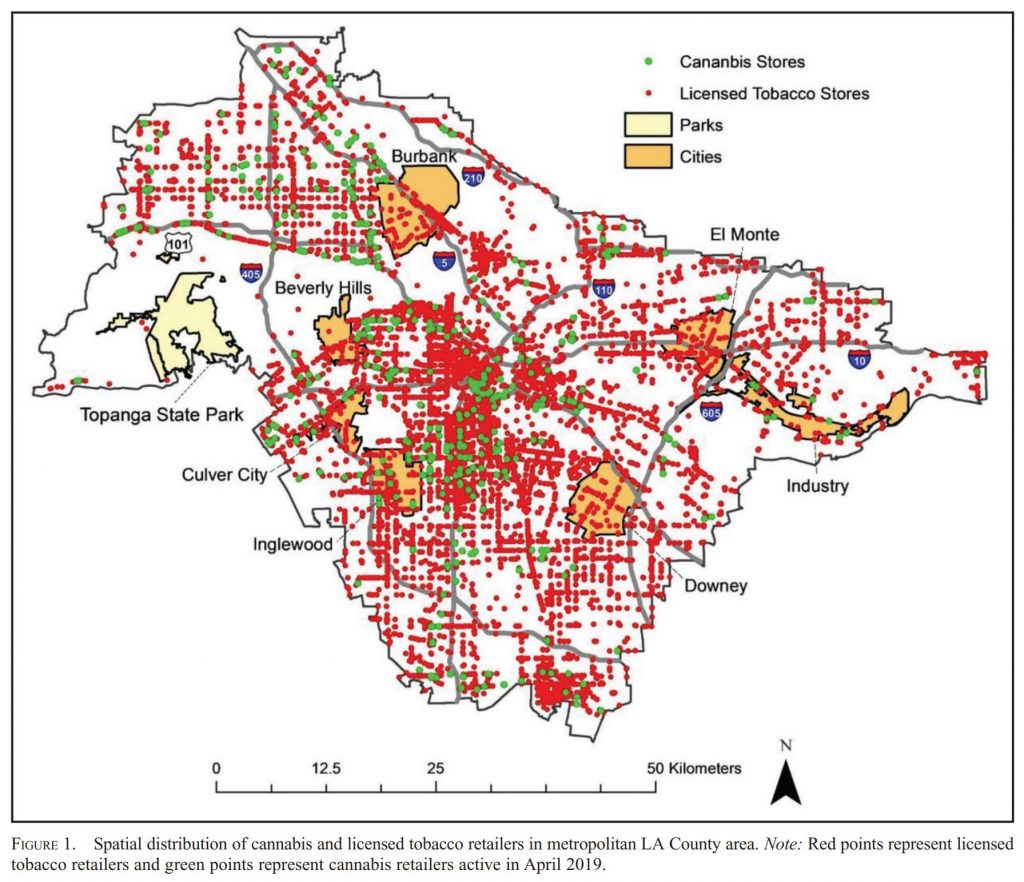
Public health researchers, led by the University of California, Irvine, found that Los Angeles-area cannabis retailers were concentrated near tobacco retailers; and that these clusters were more likely to be found in areas with higher percentages of racial/ethnic minorities.
Findings are published in the Journal of Studies on Alcohol and Drugs.
The study adds to the limited research that shows tobacco-cannabis clusters within Los Angeles County may explain the high co-use among racial/ethnic communities and individuals ages 18 to 34. Co-use, meaning habitual use of cannabis and tobacco, has been shown to create mental health problems and could act as a gateway to harder narcotic use.
The researchers started by analyzing whether the location of nearly 450 cannabis retailers was associated with higher accessibility to more than 8,000 tobacco retailers within a 20-minute driving distance. Next, they compared socioeconomic and demographic data, such as income, age, education, and race/ethnic background, against their first data set to see if there was a connection.
Results showed that areas with higher percentages of racial/ethnic minorities and younger populations (18 to 34 years old) were more likely to have unlicensed cannabis retailers along with high access to other tobacco retailers.

“Having unlicensed cannabis retailers disproportionately located in younger and racially/ethnically diverse neighborhoods with higher access to tobacco may harm the health of the community,” said corresponding author Joshua Rhee and a PhD student with the UCI Program in Public Health. “The presence of these retailers in these communities promotes the use of these unhealthy substances to young, impressionable individuals – who may be setting themselves up for lifetime use.”
Having unlicensed cannabis retailers disproportionately located in younger and racially/ethnically diverse neighborhoods with higher access to tobacco may harm the health of the community.”
– Joshua Rhee, corresponding author & PhD Student
The researchers hope that with these results, city officials within Los Angeles County will consider passing ordinances requiring minimum distances between cannabis and tobacco retailers, and possibly enforcing stricter licensing compliance to reduce vulnerable populations from having more access to unlicensed cannabis retailers. Furthermore, since LA County’s population is diverse and comparable in size to U.S. state populations, the findings have implications for counties and states that continue to legalize cannabis.
Additional authors include David Timberlake, PhD and Veronica Vieira, DSc, from the University of California, Irvine’s Program in Public Health; Caislin L. Firth, PhD from the Simon Fraser University; Eric Pedersen, PhD, from the Keck School of Medicine of USC; and Michael Dunbar, PhD, from the Rand Corporation.